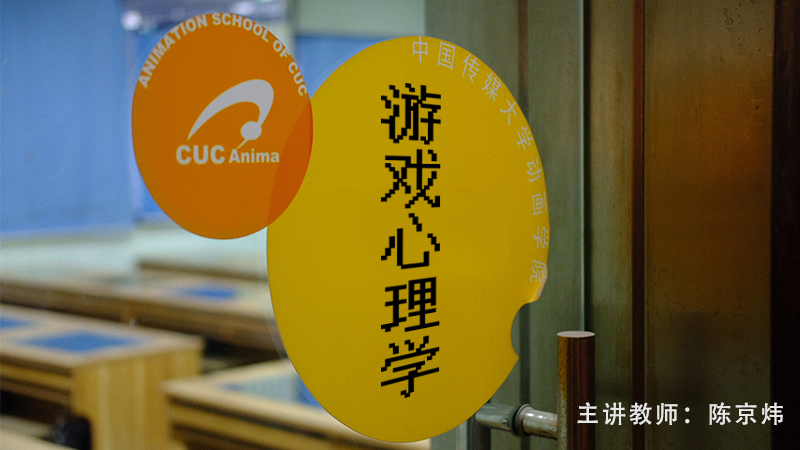
Introduction of New Structural Regional Economics课程:前往报名学习
The Introduction of New Structural Regional Economics is a course jointly presented by the School of Economics and Management of Nanchang University and the Institute of New Structural Economics at Peking University. Focusing on rich regional practical cases in China, the course will lead you to analyze the Chinese theories, absorb the Chinese wisdom and study the Chinese experience of regional economic development and governance from a brand new perspective of New Structural Regional Economics.
开设学校:南昌大学;学科:经济学、
The Introduction of New Structural Regional Economics is a course jointly presented by the School of Economics and Management of Nanchang University and the Institute of New Structural Economics at Peking University. Focusing on rich regional practical cases in China, the course will lead you to analyze the Chinese theories, absorb the Chinese wisdom and study the Chinese experience of regional economic development and governance from a brand new perspective of New Structural Regional Economics.
-1.1.1 China's Physical Geography
--1.1.1 China's Physical Geography
--1.1.1 Test
-1.1.2 Hu Line
--1.1.2 Test
-1.1.3 Economic catch-up of the central and western China
--1.1.3 Economic catch-up of the central and western China
--1.1.3 Test
-1.2.1 Overview of China’s economy
--1.2.1 Overview of China’s economy
--1.2.1 Test
-1.2.2 Coastal special economic zones in China
--1.2.2 Coastal special economic zones in China
--1.2.2 Test
-1.2.3 Western Development strategy in China
--1.2.3 Western Development strategy in China
--1.2.3 Test
-1.2.4 Northeast China Revitalization Plan
--1.2.4 Northeast China Revitalization Plan
--1.2.4 Test
-1.2.5 Rise of Central China Plan
--1.2.5 Rise of Central China Plan
--1.2.5 Test
-1.3.1 Coordinated regional development and main functional area
--1.3.1 Coordinated regional development and main functional area
--1.3.1 Test
-1.3.2 China’s urban agglomeration pattern and the economic effect
--1.3.2 China’s urban agglomeration pattern and the economic effect
--1.3.2 Test
-2.1 Agricultural location theory
--2.1 Agricultural location theory
--2.1 Test
-2.2 Growth Pole Theory
--2.2 Test
-2.3 The Stages of Economic Growth
--2.3 The Stages of Economic Growth
--2.3 Test
-2.4 Pole & Axis System Theory
--2.4 Pole & Axis System Theory
--2.4 Test
-2.5 Center-periphery theory
--2.5 Test
-3.1 Why New Structural Economics
--3.1 Why New Structural Economics
--3.1 Test
-3.2 The Theoretical Foundation of New Structural Economics
--3.2 The Theoretical Foundation of New Structural Economics
--3.2 Test
-3.3 Does New Structural Economics Offer Explanations?
--3.3 Does New Structural Economics Offer Explanations?
--3.3 Test
-3.4 Application for Industrial Policy
--3.4 Application for Industrial Policy
--3.4 Test
-3.5 Does the idea of New Structural Economics work?
--3.5 Does the idea of New Structural Economics work?
-4.1 Regional Externality
--4.1 Test
-4.2 Endowment Structure Transformation
--4.2 Endowment Structure Transformation
--4.2 Test
-4.3 Role Boundary of Facilitating Government
--4.3 Role Boundary of Facilitating Government
--4.3 Test
-4.4 Spatial Optimal Equilibrium
--4.4 Spatial Optimal Equilibrium
--4.4 Test
-4.5 Evolution of Dynamic Spiral
--4.5 Evolution of Dynamic Spiral
--4.5 Test
-5.1 China's Development Experience and OFDI
--5.1 China's Development Experience and OFDI
--5.1 Test
-5.2 Commonness and New Trends of Developing Countries
--5.2 Commonness and New Trends of Developing Countries
--5.2 Test
-5.3 Industrialization of Developing Countries with Special Economic Zones
--5.3 Industrialization of Developing Countries with Special Economic Zones
--5.3 Test
-5.4 Growth Identification and Facilitation Framework (GIFF)
--5.4 Growth Identification and Facilitation Framework (GIFF)
--5.4 Test
-5.5 GIFF in Practice and Case Studies (Nigeria, Benin and Uzbekistan)
--5.5 GIFF in Practice and Case Studies (Nigeria, Benin and Uzbekistan)
--5.5 Test
- 6.1.1 The global competitiveness model and its theoretical basis
-- 6.1.1 The global competitiveness model and its theoretical basis
--6.1.1 Test
- 6.1.2 The Brief introduction of the Theory of County Economic Competitiveness
-- 6.1.2 The Brief introduction of the Theory of County Economic Competitiveness
--6.1.2 Test
- 6.2.1 Situation of the Chinese Counties: Development Stage、Location Characteristics and Natural Res
-- 6.2.1 Situation of the Chinese Counties: Development Stage、Location Characteristics and Natural Res
--6.2.1 Test
- 6.2.2 The other Situation of the Chinese Counties and The Case of Qinyuan Pencil
-- 6.2.2 The other Situation of the Chinese Counties and The Case of Qinyuan Pencil
--6.2.2 Test
- 6.2.3 The County's Development Strategy (comparative advantage) Analysis
--6.2.3 The County's Development Strategy (comparative advantage) Analysis
--6.2.3 Test
-6.2.4 The Other County's Development Strategy (comparative advantage) Analysis and Conclusion
--6.2.4 The Other County's Development Strategy (comparative advantage) Analysis and Conclusion
--6.2.4 Test
-6.3.1 The Case of Jinjiang and Guanling
--6.3.1 The Case of Jinjiang and Guanling
--6.3.1 Test
- 6.3.2 The Case of Qianyang and Changzhi
-- 6.3.2 The Case of Qianyang and Changzhi
--6.3.2 Test
- 6.3.3 The Case of Hotan
-7.1.1 Targeted Poverty Alleviation Strategy
--7.1.1 Targeted Poverty Alleviation Strategy
--7.1.1 Test
-7.1.2 Cases of the Old Revolutionary Base Areas
--7.1.2 Cases of the Old Revolutionary Base Areas
--7.1.2 Test
-7.2 Growth Identification and Industrial Policy: Jilin Revitalization
--7.2 Growth Identification and Industrial Policy: Jilin Revitalization
--7.2 Test
- 7.3.1 The Carrying Capacity of Yangtze River Economic Belt
-- 7.3.1 The Carrying Capacity of Yangtze River Economic Belt
--7.3.1 Test
- 7.3.2 The Development of Yangtze River Economic Belt
--7.3.2 The Development of Yangtze River Economic Belt
--7.3.2 Test
-7.4 Growth Identification and Facilitation: Integration of Yangtze River Delta and High-quality Deve
--7.4 Growth Identification and Facilitation: Integration of Yangtze River Delta and High-quality Deve
--7.4 Test
-Final examination
经济学博士,副教授、硕士生导师,教育部人文社科重点研究基地中国中部经济社会发展研究中心研究员,赣江青年学者。主要讲授《新结构区域经济学》、《宏观经济学》等课程。目前在国内外权威期刊发表论文20余篇,出版学术专著2部。主持国家社会科学基金青年项目1项、省部级以上项目2项。获得优秀本科生论文指导教师、省教学成果一等奖等荣誉奖励。
北京大学新结构经济学研究院教授、院长,北京大学南南合作与发展学院院长,北京大学国家发展研究院名誉院长。曾任世界银行首席经济学家兼负责发展经济学的高级副行长。林毅夫教授为发展中国家科学院院士及英国科学院外籍院士,并获英法美加香港10所大学荣誉博士学位。主要著作:《战胜命运》、《超越发展援助》、《繁荣的求索》、《解读中国经济》、《新结构经济学》、《从西潮到东风》、《本体与常无》、《中国的奇迹》等二十余部。并在国内外学术期刊发表100多篇论文。
教育部长江学者特聘教授(2012年),博士研究生导师,南昌大学副校长。主讲课程《生态经济学》、《区域经济模型与方法》、《区域与城市经济学》;主持国家社科重大、重点项目,以及国家自然科学基金项目等11项,主编应用经济学教学与科研系列教材六部,出版学术专著八部;在国内外学术期刊上发表论文140余篇。
博士,副教授,硕士生导师,南昌大学赣江青年学者。研究兴趣和方向为区域经济增长与可持续发展、区域创新网络与空间计量、宏观金融与银行效率评价。主持国家社科基金项目1项,省部级课题4项。在《International Review of Economics and Finance》、《数量经济技术经济研究》和《科学学研究》等SSCI/CSSCI发表学术论文多篇。担任SSCI期刊《Emerging Markets Finance and Trade》和《North American Journal of Economics and Finance》匿名审稿专家。
北京大学新结构经济学研究院国际发展合作部主任、资深实务专家,法国国家科学院国际发展研究中心(CERDI-CNRS)发展经济学博士,北京大学法国语言文学和经济学双学士。曾在埃森哲(Accenture)咨询公司和国家电力投资集团任职,直接负责海外投资、商务谈判、政府事务和公共关系。研究领域包括中国企业走出去实证研究、工业园区诊断以及制造业、能源和矿业的国际产能合作及全球影响等。主要负责新结构经济学在实践领域的落地和推广,负责新结构经济学研究院的国际合作和国际智库项目。于佳博士目前担任亚洲开发银行(ADB)顾问,是世界能源理事会(World Energy Council)未来能源领袖中国代表,任首届全球董事会成员,发展委员会委员(2015-2017)。
北京大学光华管理学院经济学博士,曾在《Sustainability》《the Annals of Regional Science》《China Economist》《金融研究》等国内外核心学术期刊发表论文20余篇,曾获全国经济学博士后学术论坛一等奖、谭崇台发展经济学奖学金、上海青年经济学者论坛二等奖等国内外30余奖项。近年来主持和参与了多项国家社科基金项目、博士后面上基金一等资助项目以及国家与地方政府的智库项目。研究领域主要包括要素收入分配和新结构经济学。




